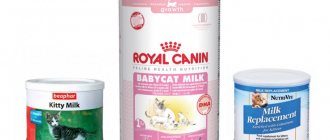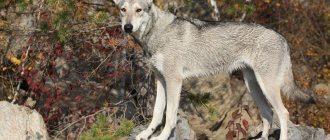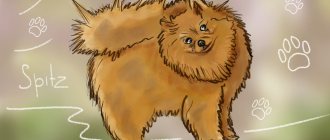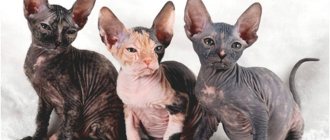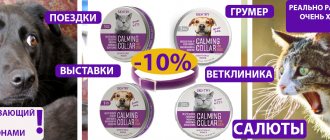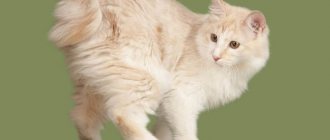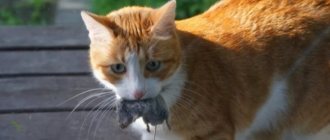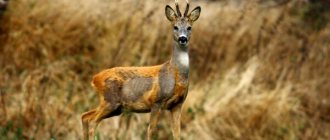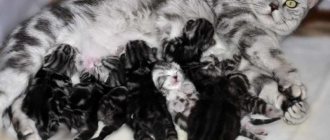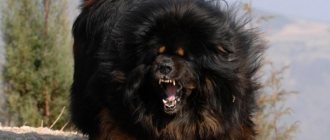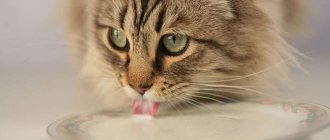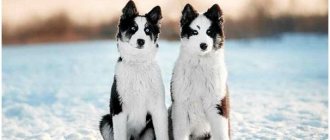Dairy goat breeds and their description
Toggenburg
Photo:
It owes its name to the Swiss valley. The growth of the animals is somewhat smaller compared to the Saanen breed. An adult goat weighs on average about 50 kg; a goat can gain weight of 70 kg.
During the lactation period, about 100 liters of milk are obtained from one goat. Fat content is 3–8%. The breed is prolific, with up to three kids born in one lamb.
Goats are widespread throughout the world. Scientists in England and Holland continued breeding work, and now Toggenburg English and Dutch goats have been bred.
Saanensky
They are the highest yielding dairy animals. The animals have a strong build and can gain weight of about 90 kg. A breeding goat can weigh almost a hundredweight.
The lactation period is 11 months. The average yield is about 1000 liters in 365 days. There are representatives that produce approximately 3 tons per year.
The product has a fat content of 3.7–4.5%. One hundred goats can produce more than 200 kids.
The breed is popular both in European countries and in America. Animals have rapid adaptation to different climatic conditions.
In our country, Saanenians are kept as improvers for crossing with other goats in order to obtain increased productivity, as well as for the reproduction of a purebred herd.
Nubian
The dimensions can be compared with the previous breed. The young are early ripening. Adult goats gain weight of about 50 kg. From the first lactation, a Nubian goat can produce more than 3 liters of milk per day.
Gradually the figure becomes higher and reaches 5 kg. In 365 days they get about 1200 kg. Fat content - 4.5–8%. One goat can give birth to 2-3 kids. Some females have kittens twice a year. The young are early ripening.
In our country there are very few purebred goats, so young animals are very expensive. It is preferable to raise Nubians on a small farm rather than on a large farm.
It is important to remember that this milk-producing breed should be kept separately from other goats.
Megrelian goats
The homeland of the animals is in the western regions of Georgia. The breed is distinguished by two subspecies: lowland and upland. The former are characterized by short stature and low weight - on average, a goat weighs up to 35 kg, producers - about 50 kg.
The lactation period does not last long, approximately 200 days. One goat produces up to 350 liters of milk in 365 days, the fat content is 4.5%.
The upland type is larger. Females weigh about 42 kg, males - 70 kg. Over 6 months of the lactation period, up to 250 kg of milk with a fat content of 4.5% is obtained.
The products are used for the production of cheeses and fermented milk drinks. After the first lambing, goats are not milked; they must feed the young. The Megrelian goat gives one kid per lamb.
This breed is not bred in the central zone of our country. The conditions of the North Caucasus region, Crimea, and Central Asian regions of Russia are ideal for them.
Gorky
Photo:
The breed is considered a subspecies of Russian goats. They were bred using Saanen and Russian breeds near Nizhny Novgorod. The average weight of a dairy goat is about 50 kg.
The manufacturer can gain weight of approximately 60 kg. Lactation lasts up to 300 days.
One goat consistently produces about 500 kg. Goats are considered fertile and bear 2-4 kids. In addition to dairy products, wool is obtained from animals. The skin is used to make shoes.
The breed is mainly bred near Nizhny Novgorod, in the Central Federal District, Northern Volga region, Tatarstan, Chuvashia.
Russians
The animals were obtained by crossing the Saanen, Toggenburg breed and Alpine goats. Widely distributed in the European part of Russia. Russian goats are of average size and weight.
Females weigh about 40 kg, producers reach 60 kg. During the lactation period, which lasts 250 days, you can get 600 kg with fat content of 4.5–5%. One goat gives birth to up to 4 kids.
The breed is universal. They receive not only milk, but also down and hide products, which are used for the production of chevro.
Cameroonian
They are a dwarf form. They can be kept not only in the yard, but also in the apartment. Animals grow about 45 cm at the withers. The average weight of a goat is about 15 kg, goats are somewhat larger - up to 25 kg.
One goat can produce 1.5 kg of milk per day. Dairy products are odorless, with an average fat content of 5.3%. Milk is used in cheese making.
One goat can give birth to up to 4 kids. The average weight of a newborn is 0.4 kg.
Alpine
They belong to large animals. An adult goat weighs about 60 kg, the producer gains weight up to 80 kg. Dairy products from the Alpine breed are obtained for 356 days. In this situation, a goat can produce up to a hundredweight of milk.
This indicator can be achieved by grazing animals on pastures throughout the entire possible warm period. The product has a fat content of about 3.5%.
When using the Alpine breed in crossing with other goats, young animals are obtained that are superior to their parents in their productive qualities.
La Mancha breed
Descended from the Swiss and Nubians. Average weight is about 70 kg. One goat produces 5 kg of dairy products per day. From record holders they receive up to 8 kg.
In our country, the breed has become widespread in the south. It is recommended to breed goats when they reach the age of 18 months - females will delight the owner with multiple births of up to 4 kids.
Czech browns
They are very large animals. A dairy goat reaches a height of 75 cm and an average weight of about 60 kg; goats weigh 20 kg more.
From a purebred female you can get up to 6 liters per day with a lactation period of about 11 months. For one lambing you can get up to 3 kids, which are distinguished by their early maturity.
In our country, the breed has gained great popularity due to its ability to adapt to cold climates. There are selective breeding centers.
Dairy breeds have different indicators for milk yield, fat percentage and lactation period.
Barbary
Photo:
The Barbary goat takes its name from Berbera, a coastal city located in the Indian Ocean in Somalia.
Barbary is one of the 20 classified breeds in India and is most commonly found in the northwestern arid and semi-arid regions. Barbary is a small, compact goat. The head is small and neat, with small ears and small horns.
An indigenous breed of goats from India and Pakistan. The direction of productivity is meat and dairy. The color is often white with red spots, the hair is short, the ears are set vertically, and the profile of the head is straight.
The live weight of goats at birth is 1.9 kg, at weaning – 6.1, at 6 months – 8.7 and at one year of age – 15.8 kg. The weight of adult goats is 35-47 kg. In goats, these figures are respectively 1.7; 5.7; 6.0; 11.1 and 17-28 kg.
The mortality rate for goats reaches 25%, for female goats – 31.4%. The age of the first goat is 14-16 months.
The average milk production in the first lactation is 632 g/day, in the second month 638 and third 541 g/day. During 210-252 days of lactation, 150-228 kg of milk is obtained.
Milk fat content is 3.94-4.67%. Fertility is high, triplets are common. Animals make good use of poor pastures.
Bital
An indigenous breed of goats in India. Bred in the states of Rajasthan and Punjab. The direction of productivity is dairy. The color of the coat is very diverse. Live weight:
- goats at birth 2.9 kg, weaning - 10.2, at 6 months 12.7, at 1 year - 22.2, adults - 40-74;
- goats, respectively, 2.7;9.0; 11.5; 16.6; and 27-36 kg.
The average milk yield for 161-172 days of lactation is 105-168 kg. Record milk production 834 kg.
The fat content in milk is 5.03%. The age of the first kid is 77-120 weeks, the intervals between kids are 282-386 days. They get 1.91-1.7 kids per queen. In total there are more than 800 thousand goats of this breed.
Westlandic
Norwegian goat farming consists mainly of the Norwegian dairy goat breed, with a number of approximately 38,000 dairy goats.
The breed originates from the northern European group of goats and has recently been less influenced by foreign breeds, with the exception of some crosses with Saanen and French Alpine.
A native breed of goats from Norway. They are bred on the southwest coast. The direction of productivity is dairy.
The color is bluish-white. Live weight of goats is up to 90 kg, goats – 40-60 kg. The annual milk yield is 400-500 kg, the fat content of milk is 3.5%.
Garganica
A native breed of goats from Italy. The direction of productivity is dairy. Kids are born black, then acquire a chestnut color. Goats have long, straight, screw-shaped horns.
Garganica weigh about 35 - 40 kg and Garganica goat about 55 - 65 kg. Garganica goats can reach a height of 75 cm, and goats up to 85 cm.
Garganika goats produce from 200 to 250 liters of milk per year during the lactation period.
Goats of this breed are usually bred for their reliability and high vitality. Garganica goats easily adapt to difficult habitats.
Guadarrama (guadarrama)
An indigenous breed of goats from Spain. It is bred in the central part of the country. The direction of productivity is dairy. The color is dark, the hair is long, the goats are horned and polled.
Within the breed, there are meat and dairy types. The height at the withers of goats is 75-86 cm, goats 65-75 cm. Live weight of goats is 63-70 kg, goats 48-55 kg. In 210 days of lactation, 250-350 kg of milk is obtained.
Damas
Breed for dairy production. These goats are bred in Syria and Cyprus. The color is red or brown, also variegated or gray, the hair is long, goats have screw-shaped horns, goats have sickle-shaped horns, the udder is well developed.
The live weight of adult goats is 55-65 kg, of female goats – 70-90 kg. Goats reach sexual maturity at 7-10 months of age. Average milk production is 520-558 kg, fertility is 176%. Live weight of kids at weaning is 27 kg.
Golden Guernsey
This breed has been known in Great Britain since the beginning of the last century. On the island of Guernsey, amateurs carried out a selection of golden goats. The exact origin of the breed is unknown.
The direction of productivity is dairy. These are small, beautiful animals that use food well. The annual milk yield is about 700 kg, milk fat content is 3.8%, protein content is 2.87%.
It is believed that the ancestors of the Golden Guernsey were Oberhasli and Syrian breeds. The first recorded reference to the Golden Guernsey in its current form dates back to 1826, when a reference to a "golden goat" was printed in a guidebook.
Kamori
An indigenous goat breed of Pakistan. The direction of productivity is dairy. Bred in dry areas. The animals are of strong constitution and produce good quality carcasses. The udder is well developed.
Daily milk production is 2-4 kg. The height at the withers of goats is 86 cm, live weight is 50 kg.
Nejskie
An indigenous breed of goats from Iran. The direction of productivity is dairy. Animals are kept in premises in coastal areas of the country.
Production of marketable milk is about 350 kg. In total there are about 5 thousand goats of this breed.
Orospedana
This is one of the most common goat breeds in Spain. Bred in 1952. Productivity direction: dairy. It is recommended to breed this breed in Mediterranean and Latin American countries.
With intensive breeding, offspring are produced at 12 months. Goat kids are separated from their mothers when they reach a body weight of 8-10 kg. There is no data on the current state of the breed.
Partbatsar
An indigenous breed of goats of India, bred in the state of Rajasthan. The direction of productivity is dairy. The color of the hair varies from light brown to dark chocolate, sometimes there are white spots along the body.
The hair is short, shiny, and somewhat coarser and longer in goats than in goats. The ears are long and drooping. Both sexes are horned. The horns are 5-8 cm long and directed backwards.
The height at the withers of goats is 75-80 cm, body length is 80-85 cm, body weight is 35-40 kg; in goats, respectively, 70-80, 70-75 cm and 30-40 kg. The weight of male goats at birth is 2.4 kg, that of female goats is 2.0, and at 6 months the weight is 12.36 and 9.66 kg, respectively.
Milk production in the first 8 weeks of lactation is more than 1 kg/day, the duration of lactation is 175-185 days.
Milk production for 180 days of lactation is 131.9 kg. Milk contains: fat 5%, solids – 24.57, protein – 3.31, lactose – 4.31%. Animals are not resistant to diseases.
Breeding rules
Sexual maturity in the Toggenburg breed occurs at 6 months of age. True, it is recommended to cover females only at 12-18 months. For mating, a purebred goat is selected, then the offspring will be first-class. They cover the goat on hunting days. During pregnancy, females begin to grow an udder. Colostrum appears 60-70 days after mating. Pregnancy lasts 5 months. 1-4 cubs are born. For the first 3 weeks, the kids should drink all the milk. When the cubs grow a little, the milk can be milked little by little for personal use.
The female needs to be coated once a year, no more often, preferably in the fall, so that babies are born in the spring. Then the cubs that are born after milk feeding in the summer can be transferred to green grass, that is, to graze in the meadow. During the warm season, goat kids will gain about 30 kg of weight and they can be slaughtered for meat or sold before wintering.
How to choose?
In order for animals to delight with high productivity, when choosing them you need to be guided by the following knowledge:
- age category;
- compliance with breed characteristics;
- indicators of milk characteristics;
- physiological characteristics;
- resemblance to parents.
For successful reproduction, preference is given to young goats that have a proportional body build.
The limbs should be straight, the body should be elongated, resembling a barrel from the side, the back should be wide, the coat should be smooth, uniform, the udder should be elastic.
When choosing dairy goats, you need to take a closer look at the shape of the udder; it should be pear-shaped with nipples of medium length, and they should have good development.
The presence of long teats means a number of difficulties that may arise during the milking process. The presence of a loose udder is a sign indicating poor milk production.
When purchasing reproductive stock, you can try milking the goats. After this process, the udder falls off; if this does not happen, you should refuse to purchase the animal.
Dairy goats have an elastic udder; it should not be sealed. During trial milking, you can evaluate how high-quality products the animals produce.
In a home herd, it is recommended to keep one sire per 50 goats.
You need to choose a goat wisely. The animal must have a good pedigree; it is this that will influence the productive qualities of the future offspring and the health of the kids.
The sire needs to be changed every few years to avoid inbreeding, as a result of which the offspring degrades. You can keep a couple of sires and carry out parallel crossings.
What determines the choice of a breed of odorless dairy goat?
Some animals are unable to withstand temperature changes or certain climate conditions.
Other breeds require keeping exclusively indoors.
Under improper housing conditions, animal productivity is significantly reduced. This is what makes choosing dairy goats difficult.
It is advisable to first familiarize yourself with the characteristics, breed standards and characteristics inherent in young livestock. For cultivation, it is necessary to select local subspecies of small ruminants.
During their life, they managed to adapt to the climatic conditions of the surrounding area. Also, the gastric microflora in small animals can lead to some problems with feed digestibility when changing the diet.
Therefore, it is advisable to take animals that are adapted to feed on local pastures. This eliminates the risk of dysbacteriosis.
Keeping goats that have adapted to the conditions of the surrounding area is cheaper than breeds brought from other places.
Animals are able to graze in the summer on any free pastures.
Thus, there is no need to purchase combined and roughage feeds required for the standard. For the winter diet, it is possible to harvest locally cut grass.
Milk yield characteristics
When breeding such pets, breeders expect good profits. Milk yield indicators, milk fat content, protein content, vitamins and microelements are especially important.
Preference is given to “odorless” animals, since their milk is not much different in taste from cow’s milk, but is more healthy. On average, dairy goats produce from 2 to 5 liters per day, with fat content of 3-8%, depending on the breed.
Milk productivity depends on nutritional characteristics. Provide the animals with enough hay for the winter, and graze daily in the summer.
Genetic indicators of high-yielding parents
The purity of the breed must be documented. In one genetic branch, goats can differ in size and color, which is due to the peculiarities of keeping and care, and climatic conditions.
Purebred animals have parents of the same breed, the standard is the same for representatives of all generations. Signs of selection are indicated by numbers and codes that are understandable to experienced breeders.
Characteristic physique of an individual
The productivity of adult animals can be judged not only by the characteristics of the breed, but also by the appearance of the animal itself. The determining indicators of milk production are the following:
- wide-set straight legs, massive hooves;
- small head on a thin neck;
- thin skin;
- wide but not sagging belly;
- visualization of the ribs on the chest;
- clearly visible shoulder blades and shoulders;
- expansion of the body from the chest to the pelvis;
- impressive dimensions;
- straight spine without sagging.
Choose dairy goats that have lived in a particular region for generations and are accustomed to a certain diet and maintenance rules. Experiments are not always beneficial.
The size and shape of the udder, its general condition
When choosing an animal, pay attention to the shape of the udder. In a dairy goat, it is divided into 2 lobes, has a pear shape, developed but not long nipples. A loose udder is a sign of low milk production. Long, elongated nipples make milking difficult.
When palpated, the udder of a dairy animal is elastic, without suspicious lumps. If you try to milk a goat, as it empties, it lowers and several noticeable folds appear. If this does not happen, it is better to hold off on buying an animal.
For high milk production, carefully examine the veins on the goat's udder and the point of their connection (well). The more voluminous and brighter it is expressed, the more milk will be produced.
Characteristic signs of milk orientation are the triangular shape of the body and moderate mobility of the udder.
Best age for milk production
Dairy goats should not be covered early, otherwise there is a high risk of cysts and mastitis. Milking begins after lambing. The recommended age of the animal is 12-18 months. The risk of pathologies during childbirth in young goats is higher; veterinarians do not rule out postpartum complications.
Content Features
Most dairy goats are easy to care for, but all of them do not tolerate dampness and drafts, and do not like severe frosts. Pay attention to this point when arranging the barn.
Valuable recommendations for arranging a barn:
- Insulate the floor, otherwise the animal will get sick.
- Close all cracks to prevent rodents from entering.
- Regularly disinfect the room from harmful insects
- Maintain cleanliness and order in the barn.
- Control the air temperature, the optimal range is 3-5 degrees.
- Provide each goat with an individual waterer and feeder.
Features of nutrition and care:
- Renew water in drinking bowls 2 times a day, more often in summer. Expect that 1 goat drinks 8-10 liters of water per day.
- Do not leave stale hay in the feeder.
- When choosing a place for grazing, make sure that the area is free of harmful grasses.
- Avoid walking in bad weather or strong winds.
- When free grazing, provide drinking water and shelters.
- For free grazing, set up an enclosure with a high fence.
Comparative table of breeds according to main criteria
When buying a dairy goat, take into account the quantity and composition of milk, milk yield indicators. Table to help with clarity:
| Breed/indicator | Lactation period, days | Annual milk yield, l | Milk fat content, % | Specific smell |
| Saanen | 330 | 1120 | 3,3 | + |
| Lamancha | 330 | 1013 | 4 | + |
| Nubian | 315 | 814 | 3,7 | — |
| Czech browns | 365 | 950 | 5,5 | — |
| Gorkovskaya | 270 | 450 | 4,8 | + |
| Russian whites | 225 | 500 | 4,2 | — |
| Cameroonian | about 125 | 1.5 l per day | up to 6.0 | — |
What affects the taste and smell of goat milk?
It should be noted that the taste and smell of goat milk is influenced not only by the breed factor, but also by:
- conditions of keeping the animal;
- feeding a goat.
Compliance with hygienic standards for keeping animals
Indeed, if the animal itself is unkempt, rarely washes itself, and even its udder is not wiped before milking, the milk will definitely smell like a goat, and in addition, it will contain harmful bacteria.
It is strictly forbidden to drink such liquid in its raw form, as you can become infected with many diseases, but it tastes the most pleasant when it is not boiled.
Washing the udder
In order to prepare the goat's udder for milk collection, as well as to remove various contaminants and bacteria from it, it is necessary to wash it before the milking procedure.
It is carried out using: warm water; soft sponge; dry towel.
Wet the sponge thoroughly and gently begin to wash the goat's udder over the entire surface, removing all dirt. A completely clean udder must be doused with warm water again and then wiped dry with a towel.
Udder massage
Massage is not related to udder hygiene, but also has a significant impact on the quality of milk. It consists of massaging the udder lobes, carried out alternately.
Slavic rituals
The attributes of a mummered “goat” are a casing turned outward with its hair, a wooden head with horns and a beard made of straw or wicker, and a moving lower jaw. The Poles hung a bell from their beard. Belarusians know the “goat” in the form of a large doll on a stick. Ukrainians of Bukovina wore a model of a “goat’s” head on a long pole, on top of which a robe was attached, hiding the figure of the performer. In Wielkopolska, during Maslenitsa rounds ( podkozelek
) sometimes they brought a live goat, attributing to it magical effects on the harvest. A wooden horned figure of a goat was an attribute of the procession of mummers on the last Tuesday of the carnival (cognition). In Ukraine, the goat mask also appeared in wedding and funeral rites (in “games for the dead”).
The Christmas and New Year ritual of “driving a goat” is most vividly represented among Ukrainians and Belarusians (Polesie was a fairly monolithic area where the ritual existed at the end of the 19th and beginning of the 20th centuries). The core of the ritual was the singing of the song “Where a goat walks, there it will give birth…” with the chorus “Oh-ho, goat,” where the future harvest is depicted in exaggerated images (“where a goat has a horn, there is a haystack,” “where a goat has a tail, there is bush life there”, etc.). The song was accompanied by a pantomime dance: first the goat bowed to its owners, then it danced and bullied young girls, caressed small children, then, as a rule, it “died”, it was treated unsuccessfully, and only after receiving a piece of lard, it was “resurrected.” The ritual symbolized the cycle of time and the rebirth of nature.
In Belarusian rituals there were variants of the ritual songs “About the Goat and the Wolf”, “About the Goat and the Drummer”.
In Ukraine, they usually “take a goat” on Generous Evening.
In the cycle of spring rituals of the Nizhny Novgorod region, timed to coincide with Clean Monday or the first Sunday of Lent, about driving a goat decorated with a wreath and ribbons through the streets.
Megrelian variety
What is good about the Megrelian goat breed is its undemanding nature. She lives mainly in Georgia, although she is also known beyond its borders. This species is native to mountainous areas, so it is quite adapted to harsh conditions. Such a goat feeds mainly on pasture, that is, what it finds in the pasture, so owners have the opportunity to save on the purchase of feed.
Goats from Megrelia are distinguished by good productivity. With good care, milk yield can be 800-900 kg per year. Moreover, with a weight of 60 kg, milk yield can be 750 kg, and the fat content of milk can be 4%. But in reality, animals rarely achieve such indicators. As a rule, males weigh 60 kg, and females weigh on average 38-45 kg.
Representatives of this breed are predominantly white. But they can be light gray or roan.
Even dairy goats of these breeds can produce foul-smelling milk if they are not properly cared for
What to feed the animal
If goats are raised for commercial purposes (to produce high-quality fatty milk), then the issue of diet is of particular importance. When choosing feed, take into account the time of year:
- In winter, the basis of the diet is roughage at the rate of 1.5-2.5 kg per day. Be sure to add meadow or forest hay to the diet (450-500 kg for an adult). Sometimes hay is replaced with birch, poplar, and willow brooms with leaves (3-5 pieces per day);
- In summer, goats are best grazed on pastures. The animal eats approximately 7-8 kg of grass per day. An animal kept in a pen is fed 7-8 kg of cut grass, and additionally given beet tops, carrots, and cabbage leaves.
Feeding schedule significantly affects milk volume. It is recommended that bital goats receive three meals a day (in the morning at 6-7 o’clock, lunch at 12-13 o’clock, dinner at 18-19). If the diet for one feeding consists of different types of feed, you need to alternate them. Initially they feed the mash with mixed feed, then succulent feed and finish with roughage. Dinner includes easily digestible food (mixed feed, root vegetables). To increase milk productivity, goats are given water 2-3 times a day (2.5-4 liters of clean warm water at a time).
What does life expectancy depend on?
The lifespan of domestic animals depends on the person, or rather, on the conditions of detention and food. If fed properly, they will be healthy for many years. The coordinated work of all systems and organs is the key to high productivity.
Climate
Your environment influences your health and life expectancy. It is not recommended to keep these animals indoors all year round. In the warm season, it is advisable to graze them on pasture. Sunlight, lush green grass - all this strengthens the animals’ bodies and has a positive effect on their health.
Breeds with thick coats, adapted to life in regions with cool climates, will suffer from the heat in southern latitudes. On the contrary, representatives of Asian or African species will often become ill in places with short, rainy summers and harsh winters. It is better to get a breed that has been bred in its native area for a long time.
Heat-loving breeds in cold latitudes will have to be kept indoors for 9 months. In favorable home conditions, even goats that are atypical for a given region can live 10-20 years.
Conditions of detention
Goats are domestic animals that need to be provided with all the conditions for life. Before you get them, you need to take care of the barn and think through all the nuances of feeding. They must graze on pasture in the summer and be kept in a special housing facility in the winter. It is advisable to cover females once a year and milk them 2 times a day.
The barn should always be dry and clean. The optimal temperature for keeping these animals is 10-20 degrees Celsius all year round. If animals are kept in the cold, in dirt and dampness, then even representatives of the local and most hardened breeds will not live long. Goats are susceptible to various colds and infectious diseases. At 3 months of age, goat kids need vaccination to protect them from dangerous diseases. In favorable conditions, a goat lives about 15-18 years.
Nutrition
Health and life expectancy, of course, depend on the quality and quantity of food. The more complete the nutrition, the better the animal’s condition. Goats should receive the full range of nutrients, vitamins and minerals. Animal productivity depends on the quality of feed.
The health and productivity of goats, especially dairy goats, depends on the condition of their teeth. Animals have 32 of them. Moreover, there are 24 molars, and only 8 incisors, and they are all located on the lower jaw. First, baby goats grow baby teeth. Up to 4 years they are replaced by permanent ones. It is advisable to take care of these teeth. After all, the longer they are preserved, the better the goat will eat, that is, eat more. As is known, the health and life expectancy of animals depends on nutrition.
Goats that eat soft feed live a long time. Their teeth simply wear out and wear down more slowly. In addition, soft foods (fresh grass, finely chopped vegetables) are more beneficial for the body. If animals retain all their teeth, they will live 20 years. If goats are kept on roughage, the picture is sadder. It happens that at the age of 8, females lose their teeth. Of course, such animals will not be able to chew food normally, which means they will eat less and give little milk. As soon as the females’ teeth begin to deteriorate, they must immediately be replaced with younger individuals.
